You are using an out of date browser. It may not display this or other websites correctly.
You should upgrade or use an alternative browser.
You should upgrade or use an alternative browser.
T+A Solitaire P-SE
- Added by DarginMahkum
- Create date
DarginMahkum
Headphoneus Supremus
Pros: - Not too far off from the big brother Solitaire P
- Very good instrument separation, speed and detail
- Lighter and even more comfortable build
- Vegan
- Very good instrument separation, speed and detail
- Lighter and even more comfortable build
- Vegan
Cons: - Despite having lower impedance, it is not easier to drive
- Incompatible parts (connectors, pads) with Solitaire P
- Mostly plastic build
- Incompatible parts (connectors, pads) with Solitaire P
- Mostly plastic build
This is going to be a short incremental review based on my original Solitaire P review, so please refer to it as a base.
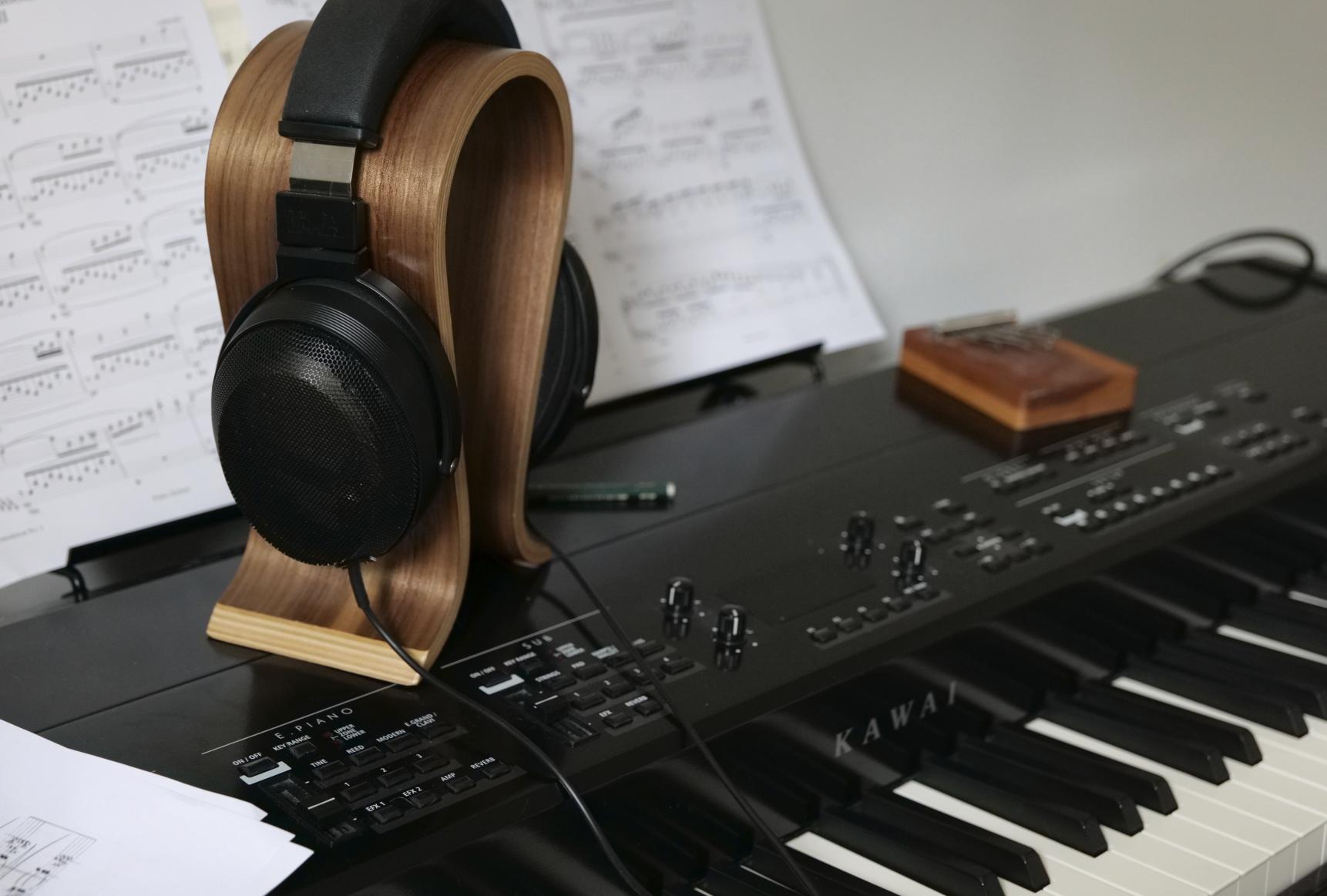
Disclaimer: I bought both headphones from my own pocket, no freebie advertisements here. I am not a reviewer, but decided to give it a try. So take my subjective writing with a pinch of salt, as you might not find what you are looking for in a usual review or comparison. But I can try to improve it based on comments .
Test sources: T+A HA200, iBasso DX300, RME ADI-2 Pro FS.
Music: Qobuz playlist
Inside the box
As with P, inside the box, you have your headphone, one balanced cable of your choice (XLR or 4.4mm) and one unbalanced. Both are 3 metres long - which is again quite long. Fortunately this time T+A made shorter 1.5m cables available. The connectors are standard 3.5mm connectors, so it is easier and probably cheaper to get an aftermarket cable. But this is actually also a bummer, as you won't be share the same cable between P and P-SE.
LIke with P, the connectors require deep insertion into the cups so you might need to tweak your connectors for easier insertion and removal. Here is my dirty trick:
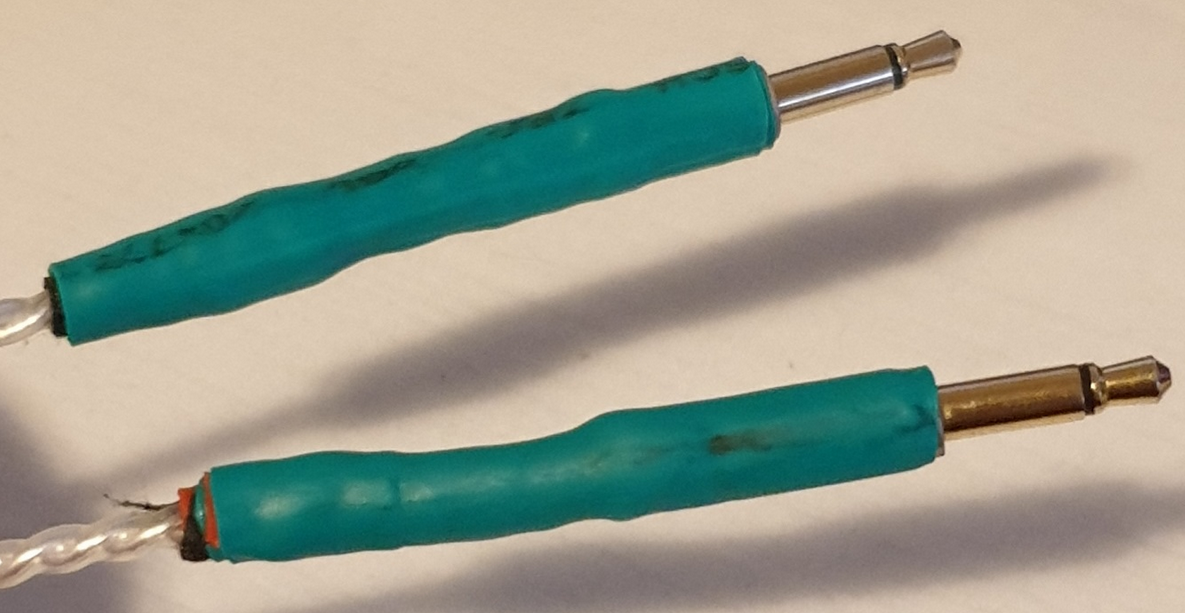
Comparison photos of P and P-SE

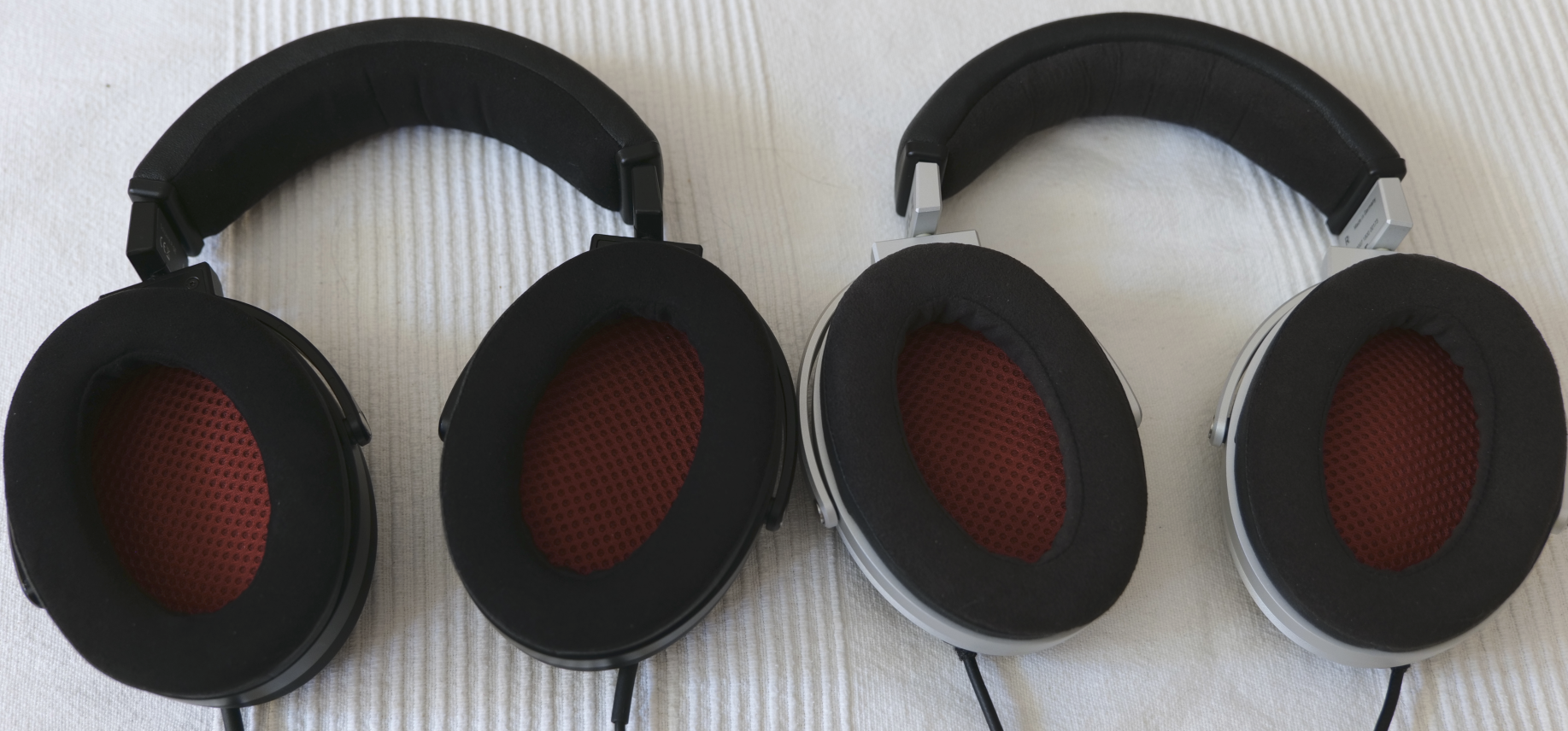

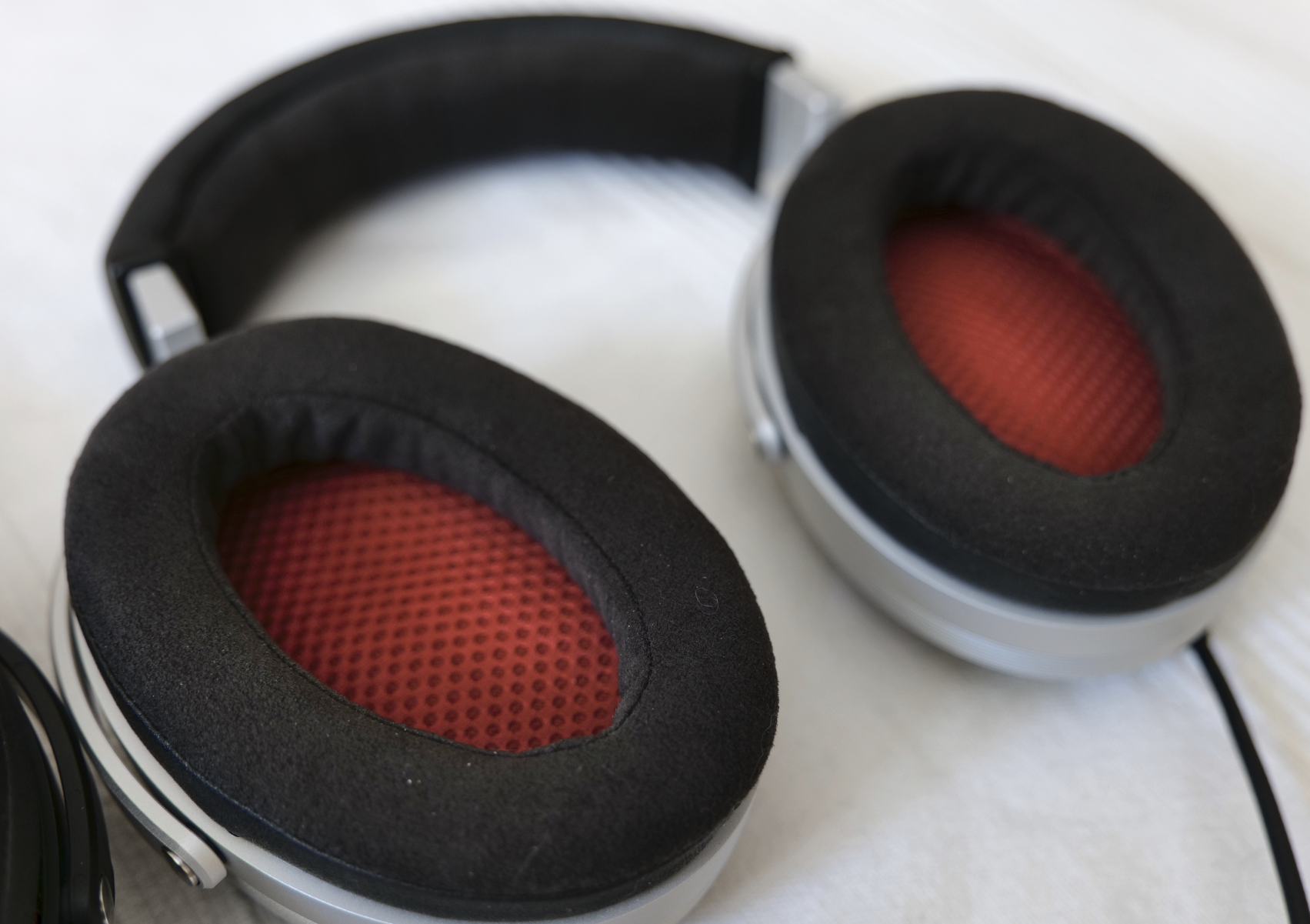

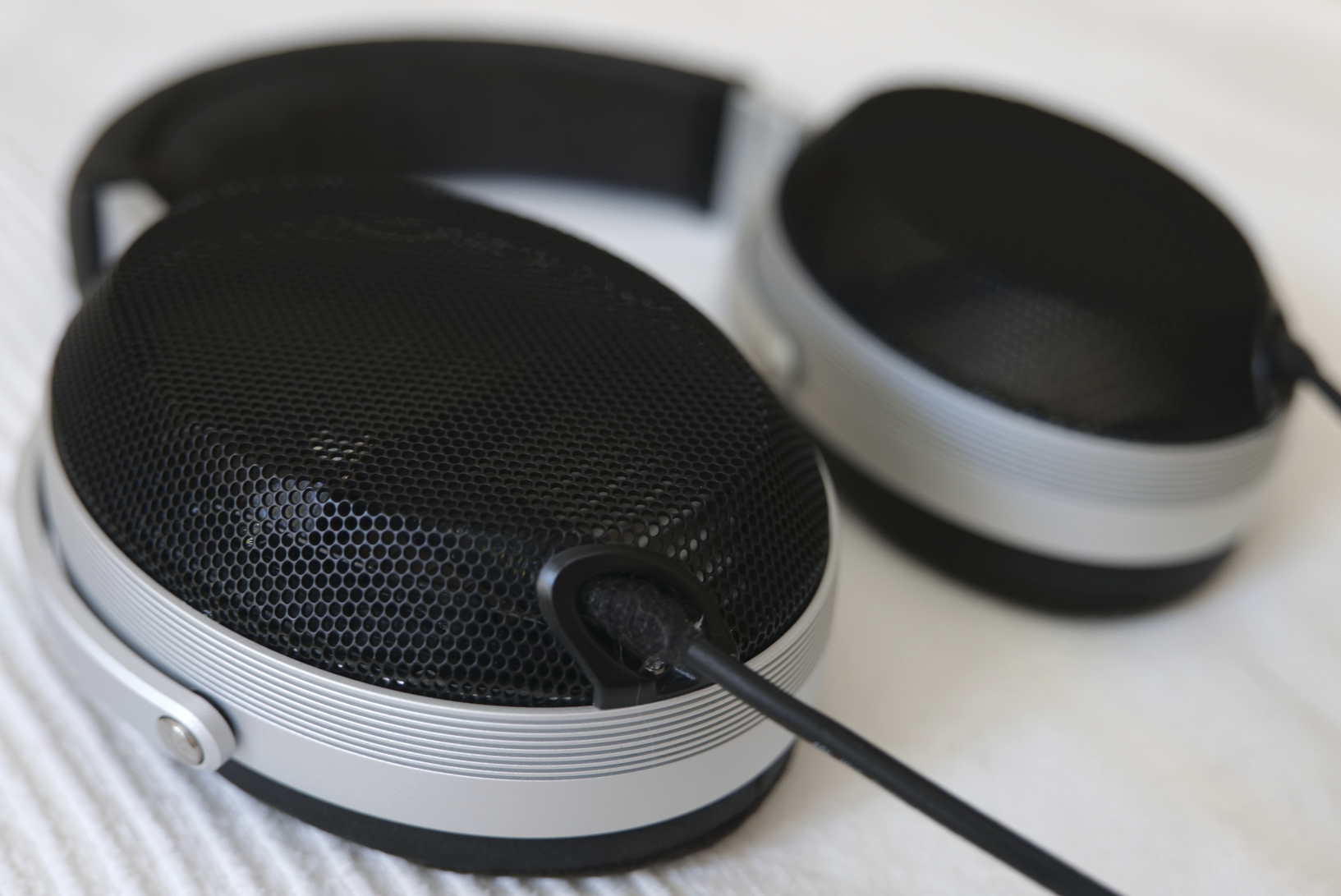


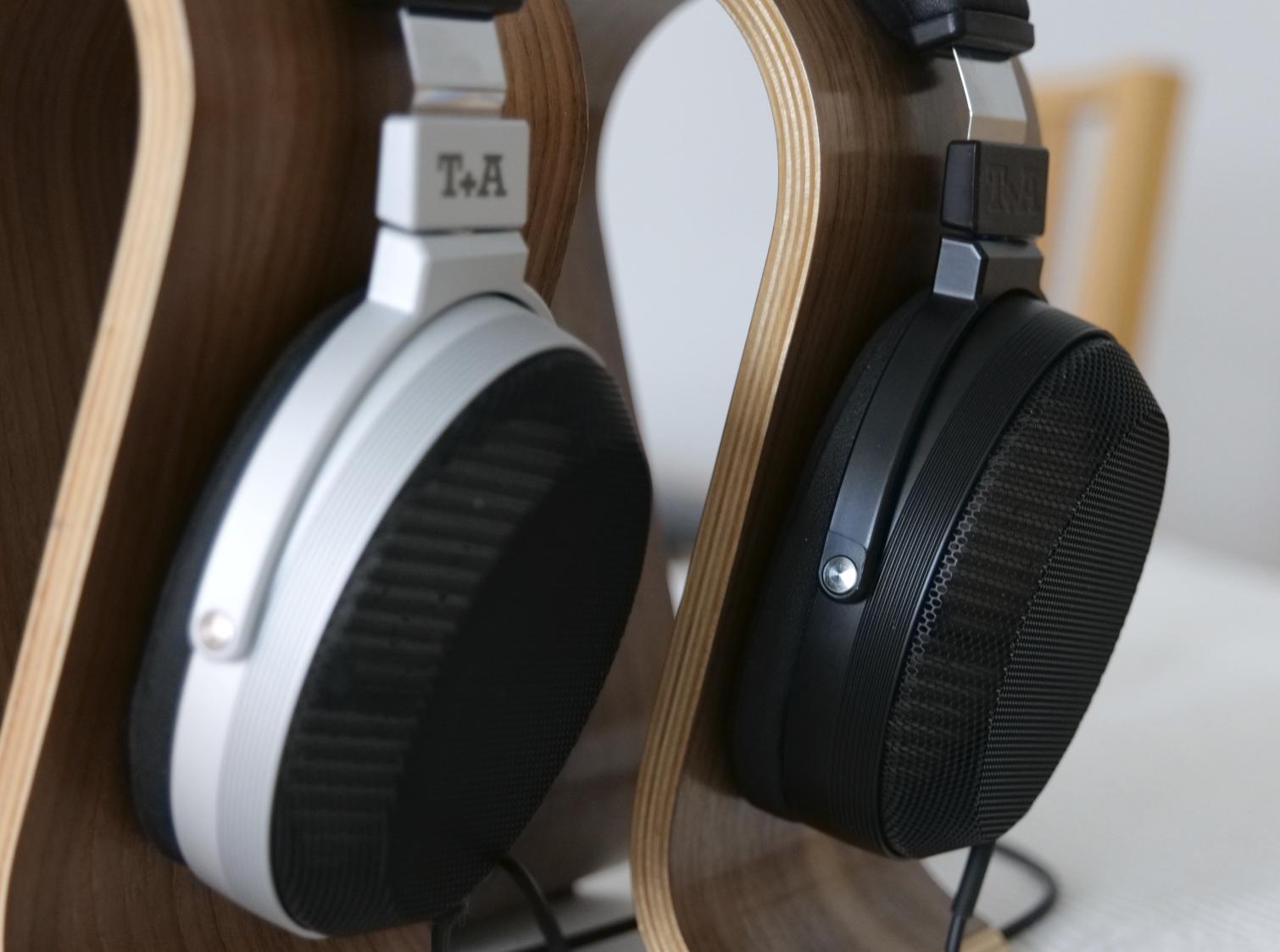
Sound
T+A knows what they want and how their products should convey the music. P-SE is certainly not a departure from the original philosophy. Everything I said before about P also holds for P-SE to a certain extent. They both have pretty much the same signature and the differences are not big.
The sound image of P-SE is more distant, a bit more out-of-your-head rendering of music. The center image is further away compared to P. The image of P is taller and deeper, and P-SE image is shorter and nor as deep. The source separation and layering are still spectacular. The less thicker (vs P) lower frequencies and mids lets the bass shine-through in a different way: You realize the speed and extreme precision of bass even more.
These are, just like P, extremely capable and transparent headphones.
P-SE reminds me a bit of HD800S with its drier sound and large sound stage. Not as large, of course. More natural. I think T+A did a spectacular job on P-SE with the treble and extension. Cymbal and horn timbres are spot on, nothing exaggerated, nothing piercing, and nothing in your face. If you don't like the immersive sound of P and more distant soundscape, with the similar e-stat lke speed texture, here you have it.
Compared to D8000 Pro, I find the metal (cymbal, horns) timbre of P-SE just a bit better. Also sound is bigger on P-SE and more expansive. Bass is more impactful. D8000 has the advantage of being airier and having a bit more reverberations of the sound room. P-SE is drier. With this piece, for example, when you listen to both back to back, you might notice the slight nasal sound of D8000 Pro, especially with the keys starting at around 2:02:
Build quality is hands down D8000 Pro, but that also means weight. As long as you are not thinking of head-banging with P-SE, you should be fine. But I have to say, D8000 has the build quality of its price.
For a few days, I left the P aside and listened to P-SE only. I started to like the more out-of-your-head rendering of music. Again the focus is on listenability, that your ears will enjoy letting the music pass through to your brain for long listening sessions. It is even a bit more drier than P. Stage is large and instruments are more scattered, but P has more depth with holographic sound for the sound sources.
Treble is a bit more audible on P, but that is mainly due to the intimacy. As an example, the cymbal hits around 1:56 and 3:04 are more in your ear with the P and it might sound too strong. But on P-SE, though it has a similar tuning, it is not as harsh. P-SE also sounds a bit airier. Treble is between P and D8000 Pro.
Something very interesting to note here. My P had a small issue with the headband as I bought it (which was a demo item - one side was a bit lose compared to the other) but I kept it as I was told that T+A was a bit busy during new years time. And I was listening to it nearly everyday. Then I sent it to T+A but instead of fixing it, they sent me a brand new one (they received it on Thursday, Friday morning I received an email that they are sending me a new one and Monday I received a brand new P. Such a fast and great service!). This of course gave me the possibility of comparing P and P-SE with similar amount of usage.
When I compared P-SE to my P which had several hundred hours of listening on them, I noticed a larger gap than compared to the brand new P. That means, your P and most probably also P-SE will improve in time gaining more clarity and sparkle. With P-SE it was even audible after a day of listening and running in. It was even told to me by the dealer that he was surprised about the change even after a day, without me telling him anything. So, be sure to run/burn your headphones in before judging their sound.
Less impedance but not easier to drive
Just looking at the impedance values, P @ 80 ohms P-SE @ 45 ohms you might think that P-SE is easier to drive of the two - but it is not. They have the same sensitivity specification and out of HA200 at the same volume level P is slightly louder. This is also due to the more intimate and bigger 3D sound image. But they can still be driven fairly from a portable device like Hiby R8 or iBasso DX300 - I especially liked the DX300 pairing of both P and P-SE.
The bass, tell me about the bass
Bass is another point where they slightly differ. P has a deeper and just as the rest of the image, bigger bass. Sub-bass is better pronounced but it is not a huge difference. At least P-SE doesn't lack the details and texture but a slight impact. You will, in the end, will be mostly limited by your source, as P-SE, like the P, is very transparent with fastest transients.
Physical differences compared to P
First and most obvious one is of course, that the cups and hinges are not made of aluminium like P, but plastic. For many this might be a deal breaker, but for me it was a welcome addition to the P, as I wanted to have an even lighter Solitaire P goodness, which is why I got the P-SE in the first place. P-SE is about a 100g lighter than P.
I find the construction robust enough for a full plastic headphone. It does not easily bend or anything. If you don't smash them on the ground while head-banging, I don't see a reason for them to break down.
I already mentioned that the connectors are different, making the P and P-SE cables incompatible. Another incompatibility is the pads. You will not be able to use the P pads on P-SE. See the photos below:


I wish it wasn't the case that they are different, but it is what it is. I don't recommend trying to fit the P-SE pads to P and vice versa, as you might deform them.
Another difference is inside the cups. P-SE has more space in the cups. How much of the difference in the sound is due to that, I am not sure. This, of course leaves a lot of space for DIY tweaking, if you are into that.
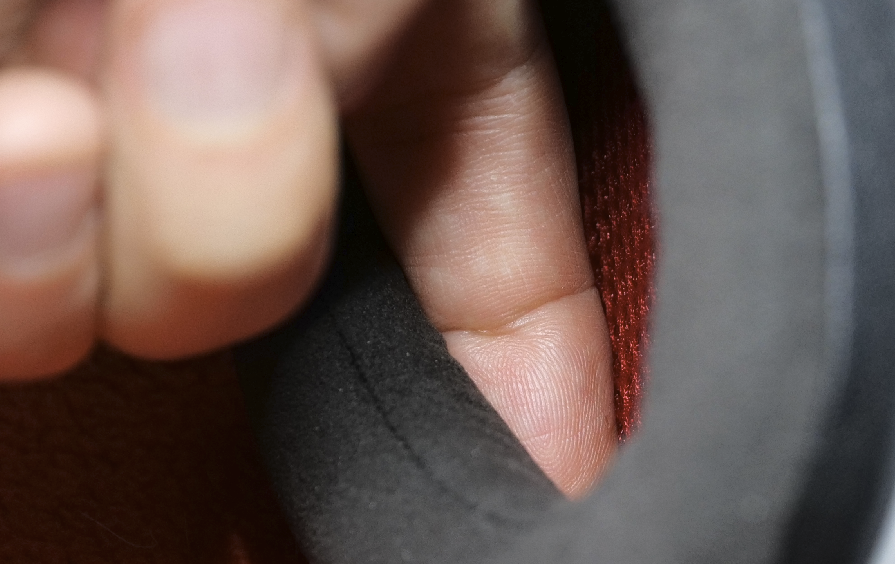
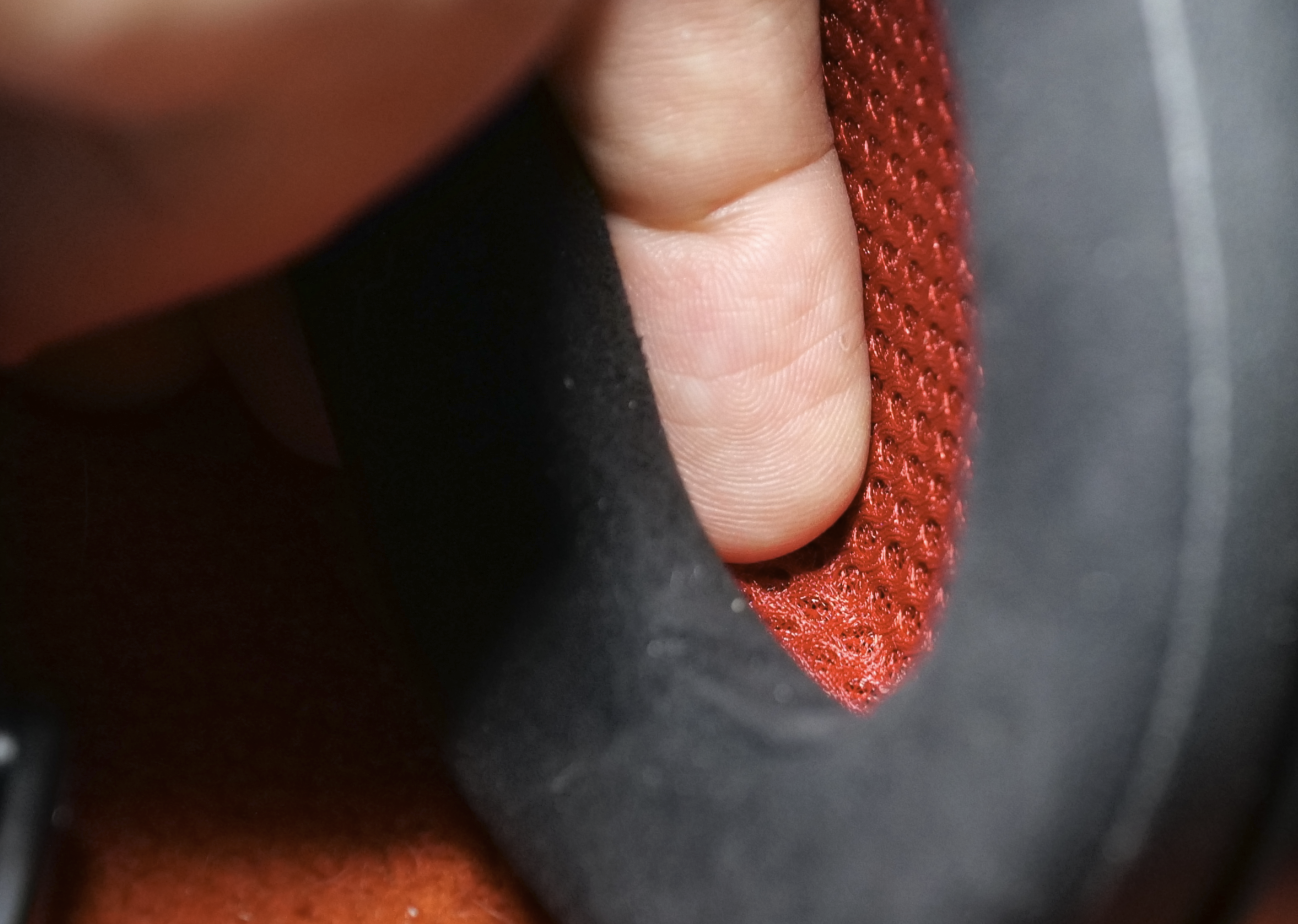
Coming from the Solitaire P heritage, these are great headphones if you don't want to make a huge hole in your bank account with the P and / or if you want something lighter and / or if you prefer something less intimate and easier on the ears. I wished that P and P-SE could share cables and pads, but it is what it is.
In the Korean review I linked below, it says that P-SE can be an excellent studio headphone and I fully agree with that. Its gentle and non-aggressive approach in conveying the sound combined with excellent layering and source separation gives you a serious tool to dissect the music or sound design you are listening to in an ear friendly way. Its tuning is such that you will immediately hear that some components, especially in the mids, are not properly positioned. It is also light and has very comfortable fit and cup design. Because of that, P-SE landed on my wife'a home studio desk driven by the RME ADI-2 Pro and the pairing is great, as she was already looking for a more ear friendly but highly technical headphone.
Other notable reviews
- A detailed review in Korean and its translation.
- Another great review in German and its English translation.
- Forbes review.

Disclaimer: I bought both headphones from my own pocket, no freebie advertisements here. I am not a reviewer, but decided to give it a try. So take my subjective writing with a pinch of salt, as you might not find what you are looking for in a usual review or comparison. But I can try to improve it based on comments .
Test sources: T+A HA200, iBasso DX300, RME ADI-2 Pro FS.
Music: Qobuz playlist
Inside the box
As with P, inside the box, you have your headphone, one balanced cable of your choice (XLR or 4.4mm) and one unbalanced. Both are 3 metres long - which is again quite long. Fortunately this time T+A made shorter 1.5m cables available. The connectors are standard 3.5mm connectors, so it is easier and probably cheaper to get an aftermarket cable. But this is actually also a bummer, as you won't be share the same cable between P and P-SE.
LIke with P, the connectors require deep insertion into the cups so you might need to tweak your connectors for easier insertion and removal. Here is my dirty trick:

Comparison photos of P and P-SE









Sound
T+A knows what they want and how their products should convey the music. P-SE is certainly not a departure from the original philosophy. Everything I said before about P also holds for P-SE to a certain extent. They both have pretty much the same signature and the differences are not big.
The sound image of P-SE is more distant, a bit more out-of-your-head rendering of music. The center image is further away compared to P. The image of P is taller and deeper, and P-SE image is shorter and nor as deep. The source separation and layering are still spectacular. The less thicker (vs P) lower frequencies and mids lets the bass shine-through in a different way: You realize the speed and extreme precision of bass even more.
These are, just like P, extremely capable and transparent headphones.
P-SE reminds me a bit of HD800S with its drier sound and large sound stage. Not as large, of course. More natural. I think T+A did a spectacular job on P-SE with the treble and extension. Cymbal and horn timbres are spot on, nothing exaggerated, nothing piercing, and nothing in your face. If you don't like the immersive sound of P and more distant soundscape, with the similar e-stat lke speed texture, here you have it.
Compared to D8000 Pro, I find the metal (cymbal, horns) timbre of P-SE just a bit better. Also sound is bigger on P-SE and more expansive. Bass is more impactful. D8000 has the advantage of being airier and having a bit more reverberations of the sound room. P-SE is drier. With this piece, for example, when you listen to both back to back, you might notice the slight nasal sound of D8000 Pro, especially with the keys starting at around 2:02:
Build quality is hands down D8000 Pro, but that also means weight. As long as you are not thinking of head-banging with P-SE, you should be fine. But I have to say, D8000 has the build quality of its price.
For a few days, I left the P aside and listened to P-SE only. I started to like the more out-of-your-head rendering of music. Again the focus is on listenability, that your ears will enjoy letting the music pass through to your brain for long listening sessions. It is even a bit more drier than P. Stage is large and instruments are more scattered, but P has more depth with holographic sound for the sound sources.
Treble is a bit more audible on P, but that is mainly due to the intimacy. As an example, the cymbal hits around 1:56 and 3:04 are more in your ear with the P and it might sound too strong. But on P-SE, though it has a similar tuning, it is not as harsh. P-SE also sounds a bit airier. Treble is between P and D8000 Pro.
Something very interesting to note here. My P had a small issue with the headband as I bought it (which was a demo item - one side was a bit lose compared to the other) but I kept it as I was told that T+A was a bit busy during new years time. And I was listening to it nearly everyday. Then I sent it to T+A but instead of fixing it, they sent me a brand new one (they received it on Thursday, Friday morning I received an email that they are sending me a new one and Monday I received a brand new P. Such a fast and great service!). This of course gave me the possibility of comparing P and P-SE with similar amount of usage.
When I compared P-SE to my P which had several hundred hours of listening on them, I noticed a larger gap than compared to the brand new P. That means, your P and most probably also P-SE will improve in time gaining more clarity and sparkle. With P-SE it was even audible after a day of listening and running in. It was even told to me by the dealer that he was surprised about the change even after a day, without me telling him anything. So, be sure to run/burn your headphones in before judging their sound.
Less impedance but not easier to drive
Just looking at the impedance values, P @ 80 ohms P-SE @ 45 ohms you might think that P-SE is easier to drive of the two - but it is not. They have the same sensitivity specification and out of HA200 at the same volume level P is slightly louder. This is also due to the more intimate and bigger 3D sound image. But they can still be driven fairly from a portable device like Hiby R8 or iBasso DX300 - I especially liked the DX300 pairing of both P and P-SE.
The bass, tell me about the bass
Bass is another point where they slightly differ. P has a deeper and just as the rest of the image, bigger bass. Sub-bass is better pronounced but it is not a huge difference. At least P-SE doesn't lack the details and texture but a slight impact. You will, in the end, will be mostly limited by your source, as P-SE, like the P, is very transparent with fastest transients.
Physical differences compared to P
First and most obvious one is of course, that the cups and hinges are not made of aluminium like P, but plastic. For many this might be a deal breaker, but for me it was a welcome addition to the P, as I wanted to have an even lighter Solitaire P goodness, which is why I got the P-SE in the first place. P-SE is about a 100g lighter than P.
I find the construction robust enough for a full plastic headphone. It does not easily bend or anything. If you don't smash them on the ground while head-banging, I don't see a reason for them to break down.
I already mentioned that the connectors are different, making the P and P-SE cables incompatible. Another incompatibility is the pads. You will not be able to use the P pads on P-SE. See the photos below:

P-SE pad on the left.

P-SE pad on the right.
I wish it wasn't the case that they are different, but it is what it is. I don't recommend trying to fit the P-SE pads to P and vice versa, as you might deform them.
Another difference is inside the cups. P-SE has more space in the cups. How much of the difference in the sound is due to that, I am not sure. This, of course leaves a lot of space for DIY tweaking, if you are into that.

P cup.

P-SE cup.
Closing words
Coming from the Solitaire P heritage, these are great headphones if you don't want to make a huge hole in your bank account with the P and / or if you want something lighter and / or if you prefer something less intimate and easier on the ears. I wished that P and P-SE could share cables and pads, but it is what it is.
In the Korean review I linked below, it says that P-SE can be an excellent studio headphone and I fully agree with that. Its gentle and non-aggressive approach in conveying the sound combined with excellent layering and source separation gives you a serious tool to dissect the music or sound design you are listening to in an ear friendly way. Its tuning is such that you will immediately hear that some components, especially in the mids, are not properly positioned. It is also light and has very comfortable fit and cup design. Because of that, P-SE landed on my wife'a home studio desk driven by the RME ADI-2 Pro and the pairing is great, as she was already looking for a more ear friendly but highly technical headphone.
Other notable reviews
- A detailed review in Korean and its translation.
- Another great review in German and its English translation.
- Forbes review.
Last edited:
View previous replies…
teknorob23
great review thanks. I think you've pushed me over the edge to ordering a pair of these as a great foil to my stellias and by the looks of it i'll be able to use my UPOCC Silver cable i use with the focals. Thanks again

PeteSTRADAMUS
What dealers in the USA sell this brand?

